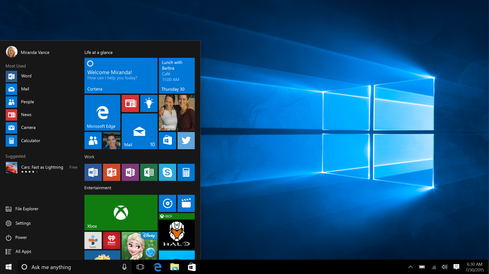Microsoft Alters Financial Reporting StructureMicrosoft Alters Financial Reporting Structure
Microsoft plans to report financial results in three business segments starting during the first quarter of its financial 2016.


Will Windows 10 Make It To 20? IT Watchers Discuss
Will Windows 10 Make It To 20? IT Watchers Discuss (Click image for larger view and slideshow.)
Microsoft plans to report financial results in three new business segments starting during the first quarter of the company's fiscal 2016 calendar.
The shakeup to its financial reporting structure is intended to better reflect a new corporate mission announced earlier this year.
Going forward, Microsoft will report revenue and operating income in three distinct segments: Productivity and Business Processes, Intelligent Cloud, and More Personal Computing.
Here's a closer look at how the company plans to organize the financial results of its products and services in each category, as reported by Microsoft:
Productivity and Business Processes
Office Commercial: products and services such as Microsoft Exchange, SharePoint, Skype for Business, and volume licensing and subscriptions to Office 365 Commercial
Office Consumers: Office sold via retail, Office 365 Consumer subscription, revenue from Outlook.com, OneDrive, consumer Skype
Microsoft Dynamics solutions: Dynamics ERP products, Dynamics CRM on-premises, Dynamics CRM Online
[Microsoft: Azure IoT Suite Now Available]
Intelligent Cloud
Server products and services: Windows Server, Visual Studio, Microsoft SQL Server, System Center, Microsoft Azure
Enterprise services: Microsoft Consulting and Premier Support services
More Personal Computing
Windows: Windows OEM licensing, other non-volume licensing of Windows OS, volume licensing of Windows OS, patent licensing, Windows Embedded, MSN display advertising, Windows Phone licensing
Devices: Surface, Windows Phone, PC accessories
Gaming: Xbox gaming consoles, Xbox Live, first-party video games, second- and third-party video game royalties
Search advertising
Microsoft will begin to announce financial results according to this structure on Oct. 22, 2015, when it holds the quarterly earnings call for Q1 2016.
If these three divisions sound familiar, it's because we've been hearing about them since CEO Satya Nadella highlighted a new mission statement and "three interconnected and bold ambitions" to drive success in a mobile-first, cloud-first world.
His plans for Microsoft: Reinvent productivity and business processes, build the intelligent cloud platform, and create more personal computing. "Our mission is to empower every person and every organization on the planet to achieve more," he wrote in an email obtained by Geekwire.
The last time Microsoft shifted its financial reporting structure was in the aftermath of a massive reorganization in July 2013. Results were divided into two larger subgroups to separate Commercial products and services from Devices & Consumer (D&C). Five categories of D&C were D&C Licensing, D&C Hardware, D&C Other, Commercial Licensing, and Commercial Other.
"By moving to these three segments, we are providing transparency in our progress against our ambitions," said Microsoft officials in a conference call Sept. 29. The new reporting strategy will reportedly provide greater insight into how the company is meeting its core priorities.
But will it?
While the new reporting strategy will more clearly highlight how Microsoft is achieving its core ambitions, it will also muddle the waters when it comes to determining the success or failure of each individual product and service. Combining Windows, Surface, and phones in the same category, for example, can ultimately conceal how Microsoft's hardware is performing in relation to Windows.
About the Author
You May Also Like






